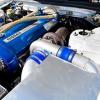Nytsky's Engine Build
Announcements
-
Similar Content
-
Latest Posts
-
Thanks! Safety wise probably should have a cage, but I drive it a few times a week for school drop offs and after school activities. So just hoping to go out and do a glory pass and see what it will do
-
Don't just call around, also call Shannon's. You've just reminded me, I need to call them again and push my premium down and my agreed values up...
-
By PotatoCake · Posted
Not a chance lol It can get a bit droney in the fwy, which is another reason i would be looking to make it a bit quieter -
By Murray_Calavera · Posted
@PotatoCake Is the GTR your daily driver?
-







Recommended Posts
Create an account or sign in to comment
You need to be a member in order to leave a comment
Create an account
Sign up for a new account in our community. It's easy!
Register a new accountSign in
Already have an account? Sign in here.
Sign In Now